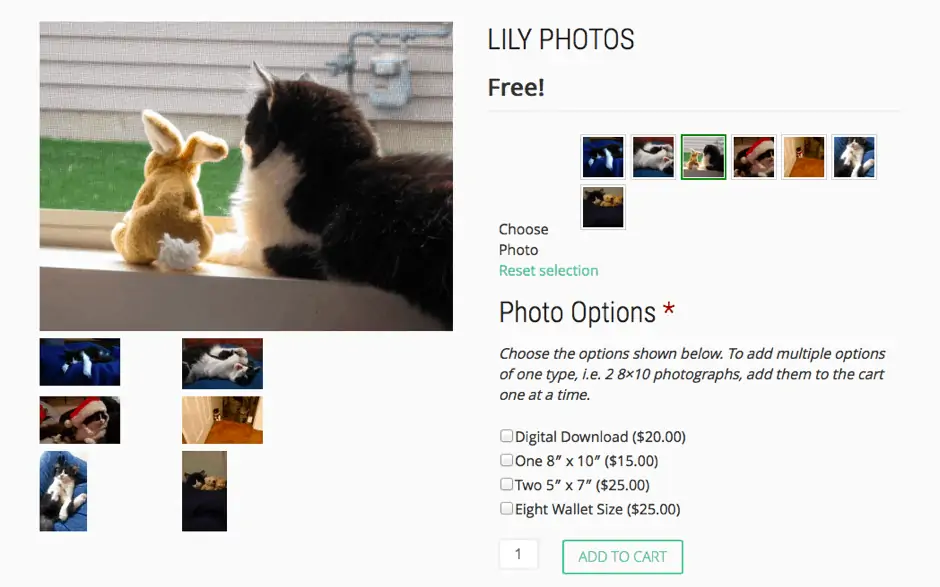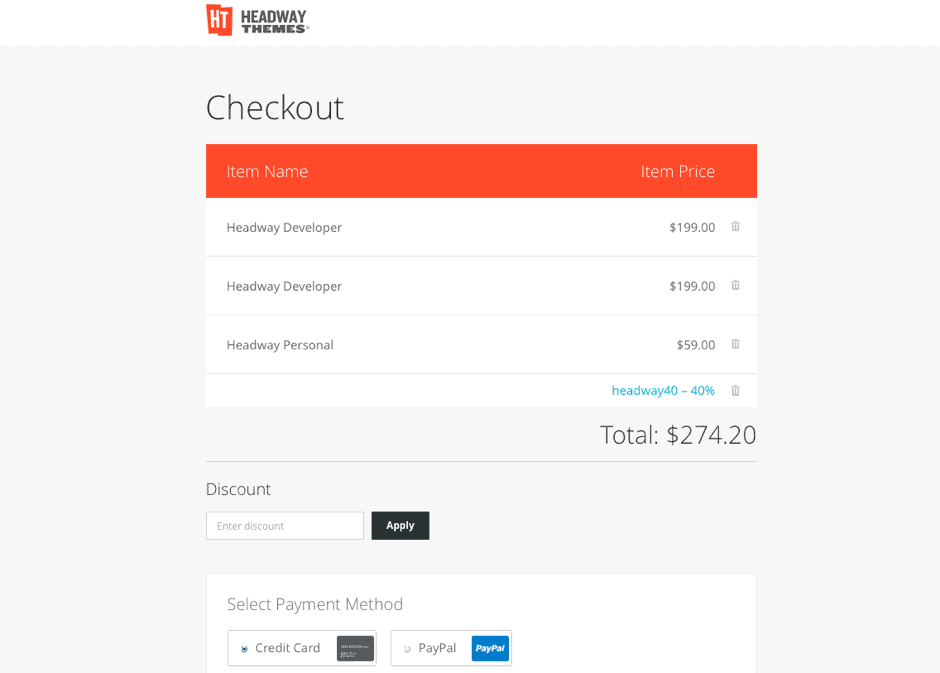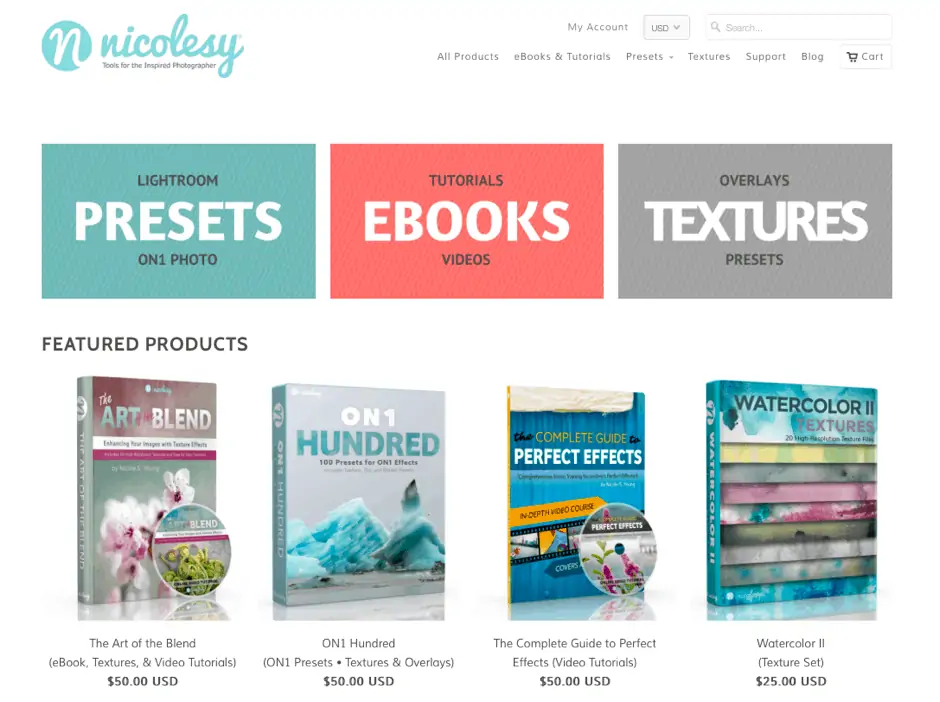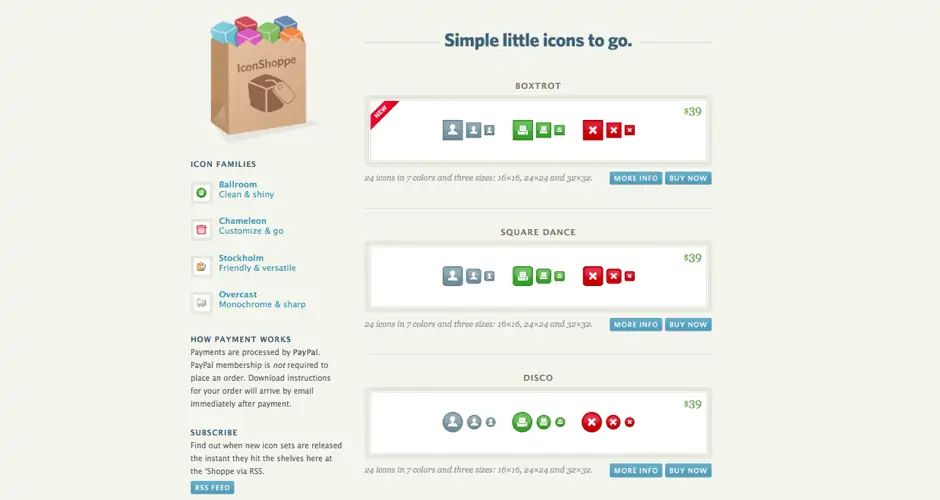Technology has paved the way for creative entrepreneurship to be achievable from your bedroom and it’s easier than ever to sell creative products such as eBooks, whitepapers, photography and digital downloads online. The way you choose to do this depends on your offering and the amount of profit you want to create. Selling digital goods online can be very fruitful – many digital products focus on information, which is cheap to produce and can be resold over and over again. Digital sale software continues to run in the background, giving you the freedom to sell without the commitment of physical stock and shipping. There is also less scope for error, with no middle man where the products can get lost or stolen. To begin making a profit from one, or a range of digital products it is often the setup and not the selling which is the most difficult part.
So whether you want to start an online empire, monetise a hobby or grow an enticing side project into a business, here are some of the ways you can begin to sell your digital goods online.
Marketplaces vs digital sales services
One of the top-line aspects to consider is whether you want to go down the route of a marketplace or digital sales service. Marketplaces are known to most – these are the eBays, the Etsys and the Amazons, where there is already a stream of traffic and demand, but where you remain relatively anonymous regardless of what you sell.
The benefit of selling digital products through a marketplace is the ease. With little or no technical knowledge, you can get your products online with high visibility. The downside is that it is more difficult to build a brand, with often little more than your seller or shop name to get you noticed. Online marketplaces also take a cut of what you are selling and can charge listing fees, which can cut into your profit margin.
The benefit of a digital sales service is that they give you a direct line to your customers with no middle man. With a setup or monthly subscription fee, these services won’t take a cut of your profit and allow you to dictate exactly what your product looks like and how it sells. The downside, is that you may need to invest some time or learning into setting it up and there is rarely free support if something goes wrong. With that in mind, here are some of the options available for both online marketplaces and digital sales software which will allow you to sell your digital goods online.
Selling your digital product through an online marketplace
A few of the top marketplaces for selling digital products online include:
eBay is well known as being one of the most open and varied online marketplaces for buying and selling. It’s unique selling point was always its auction and bidding system, but the channel has since evolved into a marketplace where sellers can largely manage their transactions in whichever way they choose.
Selling a digital product on eBay is not dissimilar to selling a physical product, you simply use a classified ad and indicate the product as a ‘digital item’ to ensure that you are not subject to shipping instructions. eBay sellers can sell digital products as an individual or as a professional and this works on an insertion fee< basis. Best digital products to sell on eBay: MP3 music, digital art, photos and recipes
Amazon, with its well-known portfolio in books, music and film, is a prime place for those interested in selling these types of digital goods, to reach a worldwide audience. To get setup, all you need is an Amazon seller’s account. This is free if you’re trading as an individual and are selling less than 35 items per month. The professional account comes with a $40 per month subscription fee and allows you to sell more items per month, also giving you access to Amazon’s API functions and inventory management feeds. The fees for selling products depend on the products being sold. A breakdown of Amazon’s seller fees for buyers can be found here as a guide.
There are also various programmes for those looking to sell exclusively with Amazon, such as the Amazon Kindle Direct Publishing programme for eBooks and Amazon Instant Access which allows you to sell virtual goods in the same way as physical items, so that you have a higher discoverability rate and the chance to receive reviews (unlike their in-app purchasing system for digital products).
Best digital products to sell on Amazon: eBooks, apps and gaming files
There are various Apple stores available depending on what you are selling, including the iBookstore, App Store and Mac App Store. eBooks can be sold on the iBookstore using iTunes Connect, however Apple takes a 30% cut of paid books and insists that you register under a tax service. For apps, you have to apply to join the iOS or Mac developer programme and each individual app faces a rigid application and review process before it can go live on the store. Podcasts are available to giveaway for free on the iStore but not currently as paid downloads. For apps, Apple also charges a 30% commission fee plus a cut of any in-app purchases, which can take quite a chunk out of your profit margin.
Best digital products to sell through Apple stores: apps, eBooks and magazines
It’s always worth doing your own research into digital goods marketplaces as the chances are, they’ll be a niche home that’s best suited to your specific product. Other marketplaces which are more specialised include Themeforest for website designs, plugins and PSD files, Udemy for skills courses and iStock photo for photography.
Selling your product through digital sales services
If you decide that you want to have more control over your selling, or eventually grow your digital products into a business, then a digital sales service may be for you. Some of the most popular services for selling your digital goods online include:
Gumroad is a digital goods management system that was designed for creatives looking to sell digital products. This makes it a popular choice for selling music, magazines, films, comics and so on. Gumroad offers an integration with your own website, where you upload your products into a hosted CMS and they provide you with an overlay for your site or code to add in the buy buttons. Gumroad also has a slightly different offering when it comes to payments. While it has Paypal integration, it also allows you to receive payments by credit card, with an option to receive the money directly through a bank deposit. Gumroad also manages the checkout process from start to finish, so they have complete control and ask for the bare minimum of information – an email address to send the download to and the credit card information to make the payment. However, this does mean that it is ‘Gumroad’ that shows up on the customer’s statement which can be confusing for some visitors.

Image source: Reference
Unique selling points:
- No monthly fees
- Lower level of cart abandonment due to fast checkout process
- Direct credit card payments accepted
Any disadvantages?
While Gumroad does offer a nice bank deposit option allowing you to receive your profits bi-weekly, it also takes 5% commission of all sales, plus a 25c per transaction fee which is higher than most other ecommerce platforms. However, the upside of this is that you only pay for items you sell with no monthly fees, gateway or batch fees for the number of products you put up. Gumroad is also slightly lacking in the analytics capabilities which many other platforms offer.
WooCommere is one sales system that’s more commonly associated with the sale of physical goods, through a powerful interface that works in sync with WordPress. As one of the larger ecommerce systems out there, it can be used for the sale of digital products such as eBooks and music files, but it is well suited to those already familiar with WooCommerce which is more well-known for the sale of physical products. If you already have WooCommerce configured, the only difference between setting up a physical and digital product is that you select either ‘virtual’ or ‘downloadable’ (or both) in the product Data metabox, which promptly removes shipping. Virtual products are things like services and website subscriptions, whereas e-Books, whitepapers and music are downloadable. The benefit of using a more established ecommerce platform like WooCommerce, is that it’s backed by a strong support team and is customisable down to the last drop. This means you can choose what your product looks like, how it sells and the journey your customer goes through to get it. Licenses for WooCommerce are between $49 – $149, and there are also some paid extensions and payment processing fees for Paypal or whichever payment gateway you choose.

Example of a WooCommerce digital download in action, taken from Lily Photos
Unique selling points:
- Strong support system
- Excellent reporting capabilities
- Easy setup
Any disadvantages?
WooCommerce is better suited to those selling high-quantities of products. Smaller shops or ‘one-offs’ are often much better suited to a smaller system that requires less configuration and is cheaper to execute.
Easy Digital Downloads allows you to sell digital downloads through a WordPress website, in a simple and easy to use format. For those already familiar with WordPress, this allows you to setup a digital shop online through your own website and Easy Digital Downloads is pretty much good to go as soon as you hit ‘install’. This allows you to receive money through most common payment gateways such as PayPal, Stripe and WorldPay. In terms of fee, you will need to pay for the payment gateway add-ons and have the option to pay for additional features such as invoicing and manual payments. Easy Digital Downloads is also well documented for its well-designed reporting feature which allows you to review all of your downloads and purchase history within WordPress.

Example of Easy Digital Downloads in action, taken from Headway Theme
Unique selling points:
- Smooth interface
- Excellent reporting capabilities
- Easy setup
Any disadvantages?
Depending on how many plugins you need it can be easy to clock up a $200-300 fee to get setup and as a free plugin, things like software licensing and email interactions are all add-ons, whereas in other plugins such as WP eStore ($50) they are included. Other than that, this is a fairly slick all-rounder that is easy to use for beginners and offers a smooth customer experience.

Example of a SendOwl payment site, from photography tool blog Nicolesy
SendOwl is a platform that allows you to sell digital products using a hosted shopping cart. This means that the shopping cart and checkout are managed by SendOwl’s website, so you don’t have to worry about issues that come with selling online such as data protection and SSLs. You create your products in the SendOwl dashboards, choose the pricing and upload any supporting files. Once uploaded, SendOwl provides the code for ‘buy now’ and ‘add to cart’ buttons that you can implement throughout your site. Like all hosted carts, when a customer is at purchasing point, they are led through the checkout process on SendOwl in one seamless transition. The benefit of SendOwl is that you can use it throughout your website and social media sites and they don’t believe in taking a cut of your profit, leaving you with all of the commission. Instead, they charge a monthly fee of between $9-$39, with higher costs for subscription models. SendOwl also offers a platform for self-hosting and for the purchase of physical products, but its features are much more geared up towards the selling of digital products.
Unique selling points:
- No commission fees
- Quality support provided by email
- No server costs or security management
Any disadvantages?
SendOwl is best for smaller businesses that don’t have thousands of products. It can be pleasingly simple if you’re just getting set up or want to focus on one or two products but isn’t the best option if you have plans to scale. Depending on what payment gateway you use, you can also find that the pop up for payment (so as not to deter away from your site and confuse the user) doesn’t always look as secure as it could. One way around this is to procure your own SSL certificate so that your site flags as secure the entire way through.
Shopify (with digital downloads app)
Shopify is perhaps one of the best known ecommerce systems for physical goods but how does it hold up when it comes to digital? With this platform, you simply need to procure an additional app called Fetch which is free and allows you to begin selling digital products through the same interface.

Example of a Shopify digital download via Matt and Katie
One of the benefits of Shopify is its extensive feature range and the ability to forward product updates to past customers – something that’s key when extending the customer lifecycle.
If you like Shopify, you simply integrate the digital download arm through FetchApp. This offers easy integration with Shopify and allows you to link up both your digital downloads and your physical Shopify store. The benefit of FetchApp is that for a $500 per month fee, there is no commission cost, no bandwidth limit and no cap on how many eBooks, music downloads, videos or photographs you can upload. This is excellent for those looking to create a large and varied portfolio of digital stock.
Unique selling points:
- Smooth integration with existing Shopify shops
- Unlimited bandwith and upload number
- Extensive feature list
Any disadvantages?
Shopify is such a popular and well-developed ecommerce site that it’s hard to find a badpoint. The only disadvantage of Shopify is that if at some point you decide to switch up how you sell your digital goods, you aren’t able to download your data so you would lose all of your information or be subject to a very manual data processing task to ensure it’s saved.
Sellfy is one of the platforms where the appeal comes in its simplicity. This is a platform designed specifically for digital downloads such as eBooks, photography, music and website templates. One of Sellfy’s big benefits is that you can offer an incentive to customers who share your products via social media channels such as Facebook and Twitter, therefore creating a customer acquisition strategy with little effort on your part. This incentive is also widely trackable within the Sellfy system, allowing you to see the benefit of such discounts and how many new customers they bring in. Sellfy allows you unlimited uploads and bandwidth with no monthly fee, instead charging a 5% commission on all items sold.

Learning Adobe – a Sellfy digital download
Unique selling points:
- Only pay for what you sell
- Integrated social sharing
- Good reporting system
Any disadvantages?
Sellfy is missing some of the features that the other, more established ecommerce sites have so it is more suited to those looking for quick and simple setup. This makes it less appealing if you are looking to create a long-term brand or platform to sell digital products.
Part of E-Junkie’s appeal is that there are no fees for original setup, individual transactions or bandwidth. Instead, you pay a monthly fee of between $5 and $100 depending on how many digital products you want to sell. Despite being a less-sophisticated platform, E-Junkie does have some nice individual features which are very easy to use, such as choosing your preferred checkout buttons and cross-promoting products to customers based on interest. E-Junkie also prides itself on the quality of support from its ‘support junkies’ as well as an active forum where users can help each other to answer questions. As a platform built on selling digital products, everything in E-Junkie is geared towards helping you to make the sale.

The E-Junkie powered IconShoppe
Unique selling points:
- Cheap monthly fee
- Excellent email support
- Feature rich
Any disadvantages?
E-Junkie is a long way off from being as slick as many other digital download products. It is airly simple to use, but the interface is quite clunky looking and isn’t as appealing as some other platforms.
The selling digital goods online crib sheet
With the choice in digital goods sales services so varied, here is a reiteration of a few of the main points that were mentioned above and should be taken into consideration when making your hard-earned choice:
Digital Payment Providers
Most digital goods services do not deal with credit card payments, but instead go through payment processors such as Paypal or Google Checkout. This means paying an additional processing fee on top of your monthly subscription or bandwidth cost that you pay for when using a service like Shopify or similar. This is usually around a 2-3% charge with an additional ‘fee per transaction’ which can be anything from $0.05 up to $0.30. One of the only platforms that lets you receive credit card payments direct is Gumroad, as mentioned above.
Payment setup
As you may have noticed, there are a few different options when it comes to choosing a provider and how you will pay for it. This includes the sites where you pay a one-off monthly fee and no commission such as E-Junkie and Sellfy. These are good when you are selling high-quantities of items, where the monthly fee is less than paying a 5% cut on everything you sell. For less items, you may wish to choose a free provider such as Gumroad or WooCommerce and just pay commission on what on what you sell.
Enhancing features
Something to look out for when choosing your digital goods platform is any enhancing features they may offer. This isn’t of huge importance when you’re just getting setup but things like email integration (which allows customers to shop directly from clicking a link on an email), or built in reporting and analysis could make the difference between a small shop and a thriving business further down the line.
Social selling
Many digital goods sales services allow you to enhance your offering with easy to use social selling through channels such as Facebook and Twitter. This allows you to extend your presence, gain more eyeballs and potentially sell more downloads. Definitely worth bearing in mind as you make your choice if you’re already socially-savvy.
Selling digital goods online can become one of the most manageable, lucrative ways of selling that gives everyone from introverts, through to established sales persons the ability to sell the same digital product time and time again. Choosing the right platform and digital goods service may take some consideration but once you do, the chances are you’ll never look back.

Comments are closed.